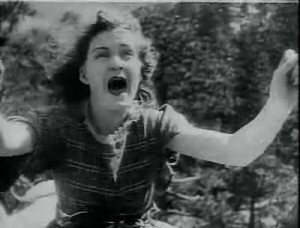While some may balk at the idea of watching a film without sound these days, hopefully sustained momentum behind the Oscar contender, The Artist, will spark a renewed public interest in recognizing the largely forgotten impact of silent film classics.
As mentioned in the genre page, what makes film an ever-evolving art form is the fact that the technology is constantly changing. While silent films dominated the first few years of the film industry, once sound was introduced, there was no returning to the wordless narrative. When looking back on great film classics, people often mention films like The Godfather, Gone with the Wind, or Casablanca. Few people ever mention any silent films. An example of a few of the silent film classics that also deserve a mention on that same list:
D.W. Griffith’s racist and controversial Birth of a Nation may possibly be the the most difficult film for someone to ever watch. Yet as Roger Ebert notes in his essay on the film, Griffith was responsible for technical feats such as “cross-cutting to follow parallel lines of action” and “cutting between wide (or “establishing”) shots and various medium shots, closeups, and inserts of details.”
Fritz Lang’s Metropolis is a German Expressionist look at at dystopian future regarding the impact of capitalism on the lower classes. The film has a complicated plot, but its special effects and set designs are astounding and revolutionary. It’s possibly one of the most visual movies ever made.
Cecil B. DeMille’s The Cheat made bold and controversial claims on female vanity and Asian male sexuality for a film released in 1915, and it also paved the way for the first Asian American film star, Sessue Hayakawa. This daring movie may also be one of the first to broach the issue of interracial relationships.
The average moviegoer is unlikely to ever see these films due to a lack of both accessibility and education. At the same time, there are ways to appreciate this forgotten art form. Here are a few resources that might help:
The San Francisco Silent Film Festival is the largest silent film festival in the country, and it takes place every July at the Castro Theatre. Not only does the festival feature silent films on a large movie screen, they also make an effort to feature well known classics to international work from China, India, Mexico, Brazil, Japan, Italy, France, and Russia.
The Silent Clown Series, which began in 1997, is a regularly scheduled film showcase of silent film comedy classics which include stars like Buster Keaton and Charlie Chaplin. The screenings are on every Saturday afternoon and are programmed by Bruce Lawton with musical accompaniment by Ben Model. They take place at Bruno Walter Auditorium, located in the Library for the Performing Arts.
The Niles Essanay Silent Film Museum in Fremont, California showcases silent film screenings every Saturday night. Upcoming screenings include a Comedy Shorts Night, The Heart o’ Hills, The Man Beyond 1922, and The Iron Mask.
The Silent Film Society of Chicago, formed in 1988, supports the preservation and recognition of silent films. They have ongoing screenings, a youth educational program and a summer festival.
Cinecon Classic Film Festival in Hollywood is a five day festival that screens silent and early sound films at the Lloyd E. Rigler Theatre. They also hold Memorabilia show, Film Book Fair and celebrity Career Achievement Awards Banquet at the nearby Renaissance Hollywood Hotel.
Both the Museum of the Moving Image and the Museum of Modern Art In New York have screenings and discussions that often revolve around silent film classics. For cinephiles and film historians, MoMA also has one of the largest film archives around.
Hopefully with the continued press for The Artist, people will become motivated to remember our film history and recognize these groundbreaking classics.

